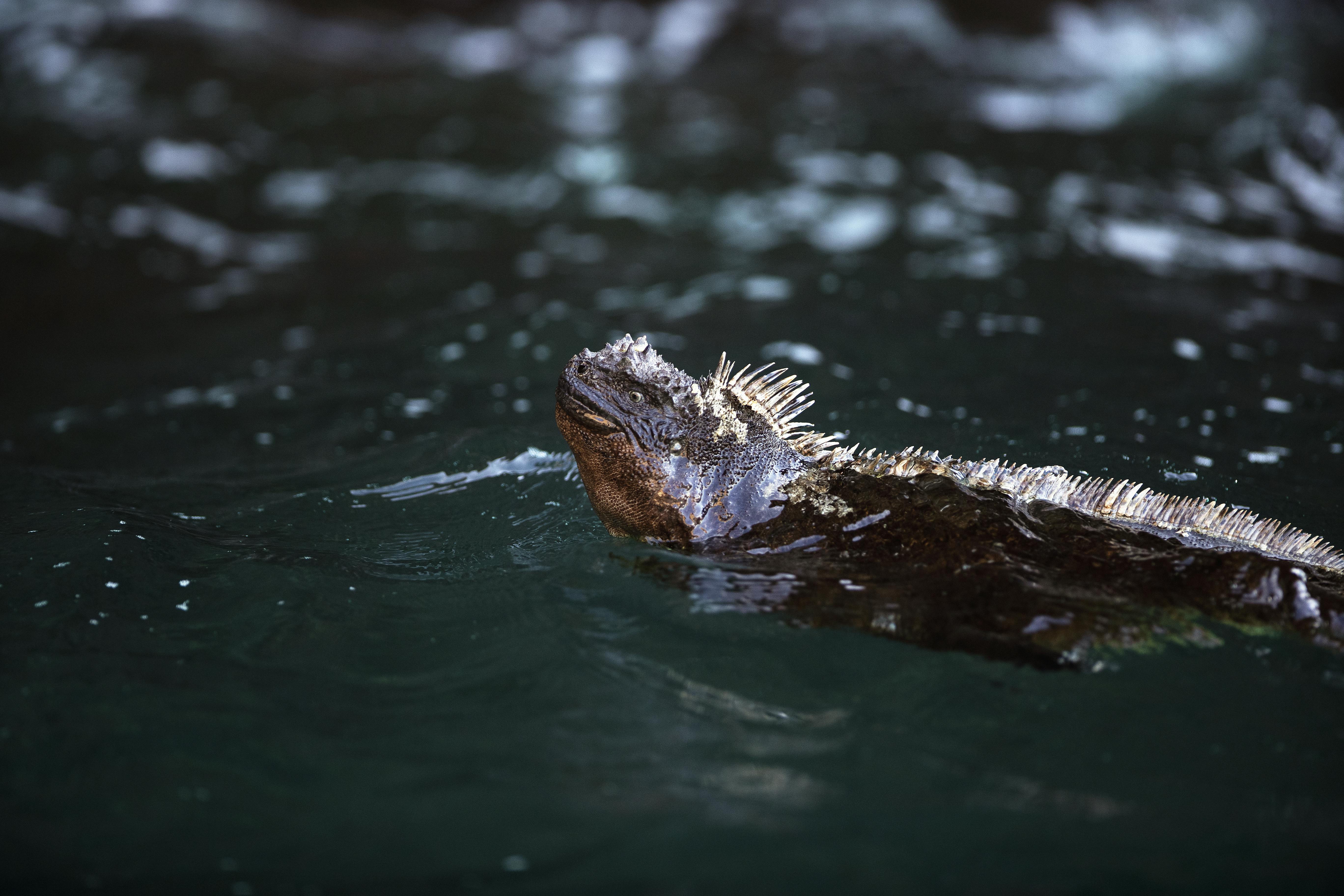Behind the Lens: Close-up Moments with Marine Iguanas
Endemic to the Galapagos Islands, the Marine Iguana is the the only ocean-swimming lizard in the world, its fierce prehistoric-looking appearance a contrast against its gentle vegetarian nature.
Silversea Expedition Filmmaker David Padilla visited Española Island to capture the fascinating feeding behavior of these reptiles as they grazed on algae and seaweed both on land and underwater.
Close-ups with Marine Iguanas
“This moment was specifically about one individual in Gardner Bay on Española Island,” says David. He used a Canon EOS 5D Mark IV with the versatile EF 28–300mm f/3.5–5.6L IS USM lens to film this location.
“The first thing you realize is that you think the rocks are moving because the Marine Iguanas are so well camouflaged on the lava rocks. Naturalists have to constantly tell guests to watch their step because they are everywhere,” he adds.

“This Marine Iguana was regaining energy because they expend a lot while underwater. When you see them on land, they are almost static because they can’t regulate their body temperature so they love sunbathing on top of lava rocks and top of each other because they can keep much warmer,” he adds.
Underwater, however, these animals have the ability to dive 15-20 meters below sea level, their flexible tails propelling them through the water, says David. “Once they are fully charged, Marine Iguanas start walking slowly toward the shore and begin swimming, which is very peculiar as they only use their tail to move in an S shape.”
Challenges of filming
Clinging to rocks doesn’t come as naturally to humans as it does to Marine Iguanas, but David, an experienced freediver, found a way to stay safe while filming and battling strong currents.
“While watching the Marine Iguana using its claws perfectly to grip to the rock, I was trying to do the same but was using a glove to hold on to them because they have lots of sharp edges,” he adds.

“After a while, I understood how the waves and current were moving which was something I had to be very aware of. Seeing them grazing the seaweed on the rocks was pretty amazing as they had their mouths fully open, and you could hear the chomping of the seaweed.”
The truly unique wildlife of the Galapagos continues to inspire David’s camera each time he visits with Silversea. “Every time I visit I have always felt amazed by the ability of the wildlife that lives here to thrive in such harsh conditions.”
